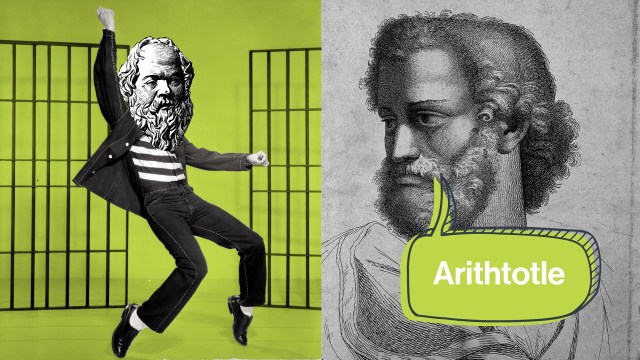Mars Opportunity And Spirit Rovers Could Have Lived Practically Forever With One Tiny Change
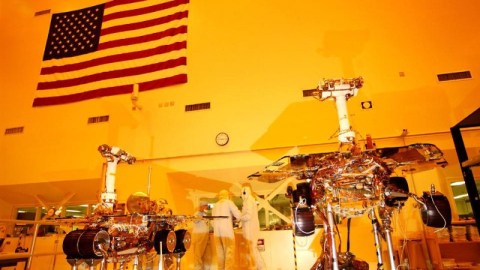
Designed for a 90-day mission each, dust killed the overachieving Spirit and threatens to now kill Opportunity. But it didn’t have to be this way.
In 2004, NASA launched two exploration vehicles to the red planet: the Spirit and Opportunity rovers. These two Mars Exploration Rovers were originally designed for 90-day missions to image, explore, and investigate the Martian surface. Yet these twin solar-powered rovers far exceeded their design lifetimes. Half a world away from one another, Spirit and Opportunity revealed a world that humanity had wondered about for millennia.
Evidence of a watery past abounded, from hematite spheres (Martian blueberries) to sedimentary rock. Crater walls and sand dunes were observed up close. The first iron meteorites on another world were discovered. And under its own power, Opportunity became the most-traveled vehicle to ever grace another planet.
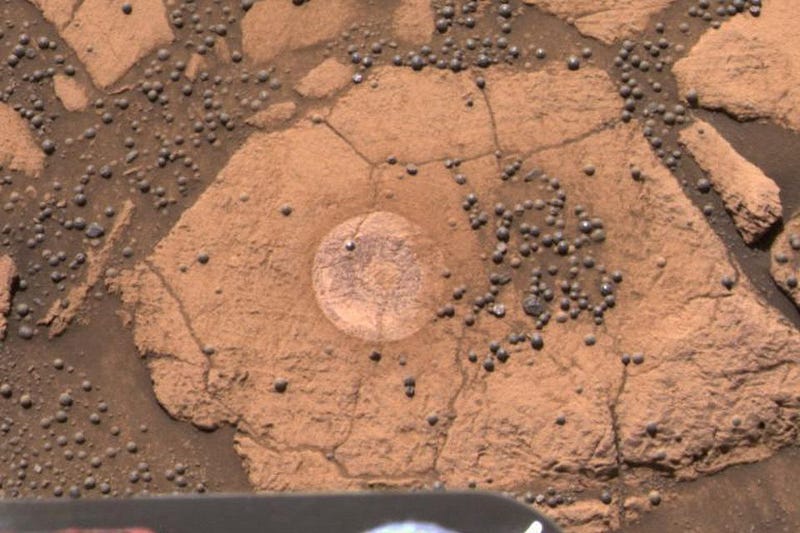
Spirit made it six years, until 2010, when enough dust accumulated on its solar panels that it could no longer continue roving. It remained as a stationary science station until its low battery life forced the team to abandon operations altogether. Opportunity, as of right now, is still alive in 2018.
Although it came perilously close to perishing a number of times as dust has accumulated on its solar panels, it’s been the beneficiary of winds that have blown the dust back off, allowing it to continue operations as planned.
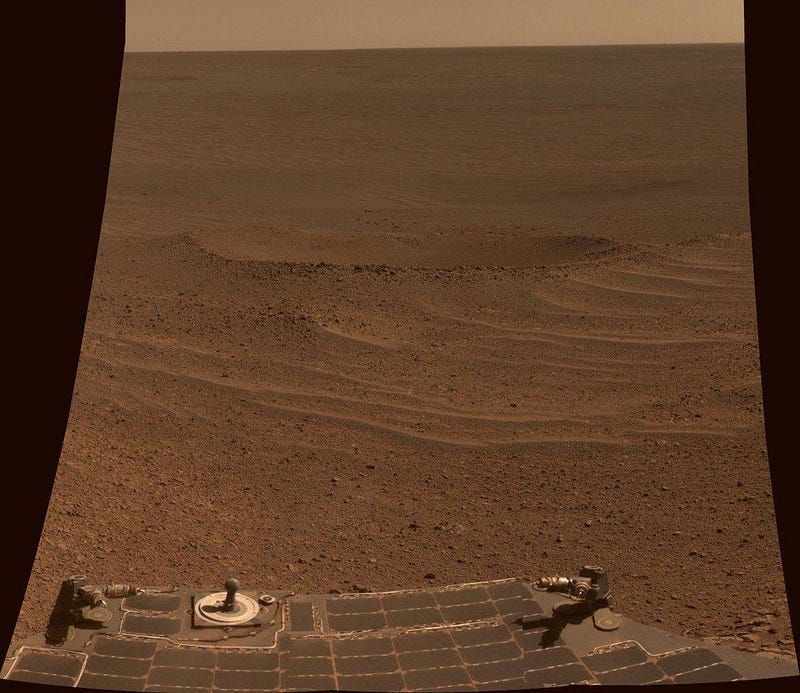
Unfortunately, it’s currently caught in the worst dust storm it’s ever experienced, and the team is facing the real possibility that this could be the end of Opportunity: the last of the Mars Exploration Rovers.
It seems remarkable that a vehicle designed for a 90-day mission has lasted 14 years, but the truth is that both Spirit and Opportunity could have lasted even longer, perhaps even indefinitely. Here’s how.

When the Mars Exploration Rovers were designed, they were the next-generation successors to the first automated rover on another planet: the Sojourner rover that landed on Mars in 1997. Sojourner was only 25 pounds, about two feet long, and was designed for a 7 day mission. Driving it very conservatively, it made it to almost three full months of activity, when the base station failed. With front and rear cameras, it took our first pictures of Mars from different locations on the ground, traveling a total distance of over 100 meters (300 feet) by time its mission ended.
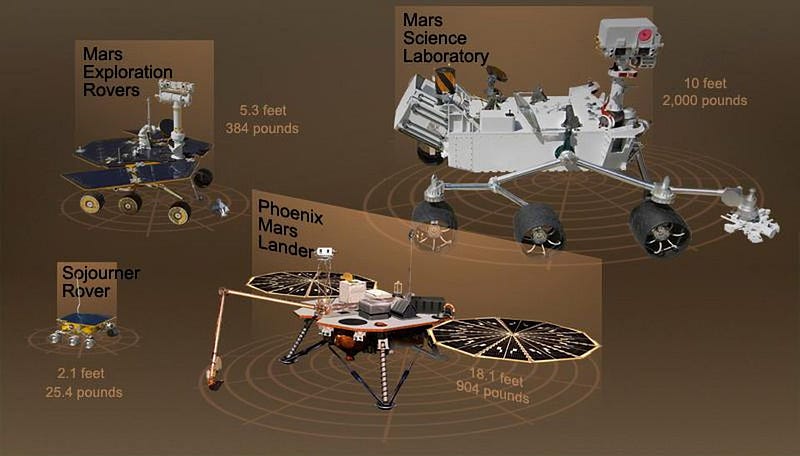
The next generation, therefore, would need to be bigger, sturdier, longer-lasting, and capable of going farther. The Mars Exploration Rovers were designed with a slew of scientific instruments and superior cameras. They would not need a base station, and could communicate with Earth directly. Spirit and Opportunity were designed to last a minimum of 90 days, with the hope that, by over-engineering the rovers, they might last much longer.
One of the biggest concerns was power. A number of options were considered in the early stages: radioisotopes, batteries, and solar panels. Because of the results from Sojourner, we knew that dust would accumulate on the solar panels, but only at the extremely slow rate of ~0.29% per Martian day. Over a 90 day mission, that meant a total reduction in power of 23%. There were a number of options, then, for how to design Spirit and Opportunity.
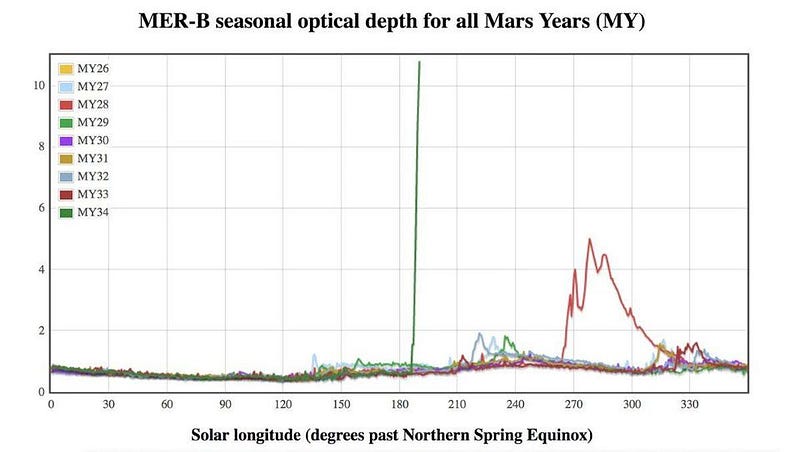
One option would be to install some mechanism such as wiper blades to remove any Martian dust that accumulates. Here on Earth, windshield wipers are so commonplace that it seems like the obvious solution to such a problem. But Mars is very different from Earth in two important ways when it comes to dust accumulating on a surface like a solar panel.
- Martian dust is extremely small and fine-grained. Atmospheric dust on Mars is approximately three microns in diameter, and adheres via electrostatic forces. You can’t just “brush it off” like you would on Earth; much dust would remain.
- There is no fluid to help on Mars. Water won’t remain liquid on Mars, and you can only bring a limited amount of any fluid with you. Dry wiping motions would harm the panel surfaces, making them an inferior solution.
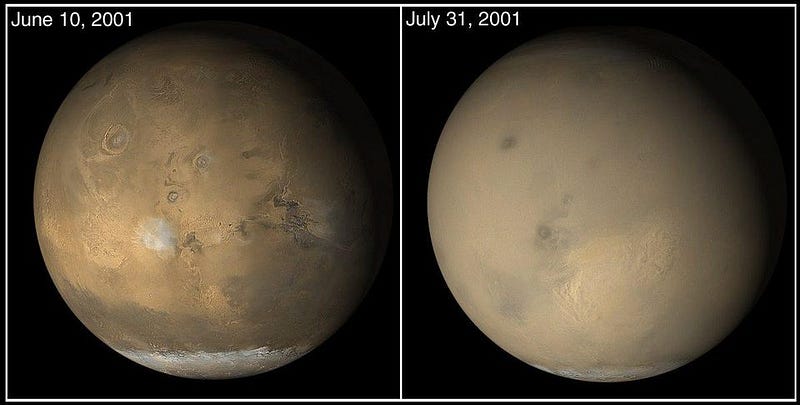
There are better options, though. Wiper blades are heavy, complex, subject to damage at the temperature extremes that Mars experiences, and are easily broken. A second solution would be to have articulated (tilt-able) panels, where you could simply orient them vertically. Since Mars normally has low-level winds that blow continuously, any dust accumulation could be blown off by the natural environment of Mars. In fact, there are “natural” cleaning events that occur on Mars, which we didn’t know about when we designed these rovers; the winds occasionally, overnight, will blow large amounts of dust off of the rovers, upping their power output. It was only when Spirit didn’t get one for an entire Martian year that it wound up dying.
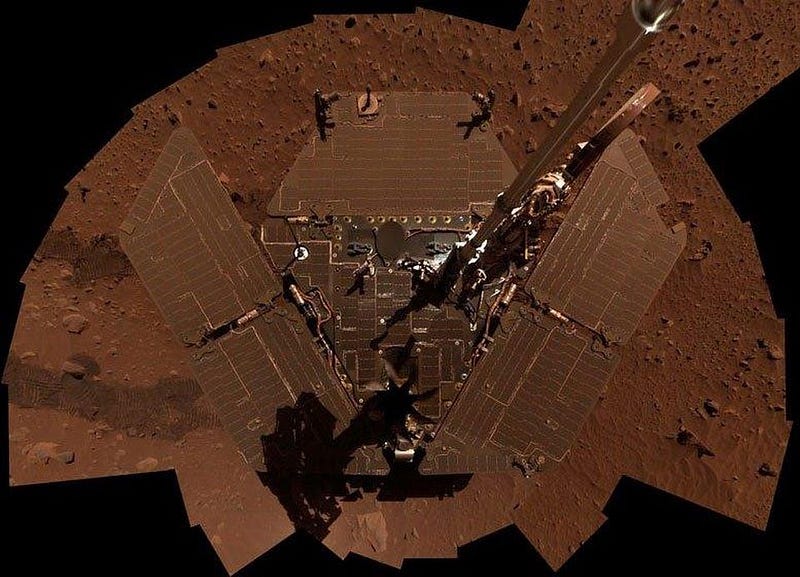
The panels could have been outfitted with a mechanism to electrostatically repel the dust. By charging the panels themselves, some charge would migrate onto the dust grains, causing mutual repulsion (since like charges repel). Then, any low wind would blow the levitated dust away, greatly improving the rover’s performance. The drawback is that sometimes dust particles become electrically charged, and you don’t get to choose the sign of the charge, particularly if they’re good insulators.
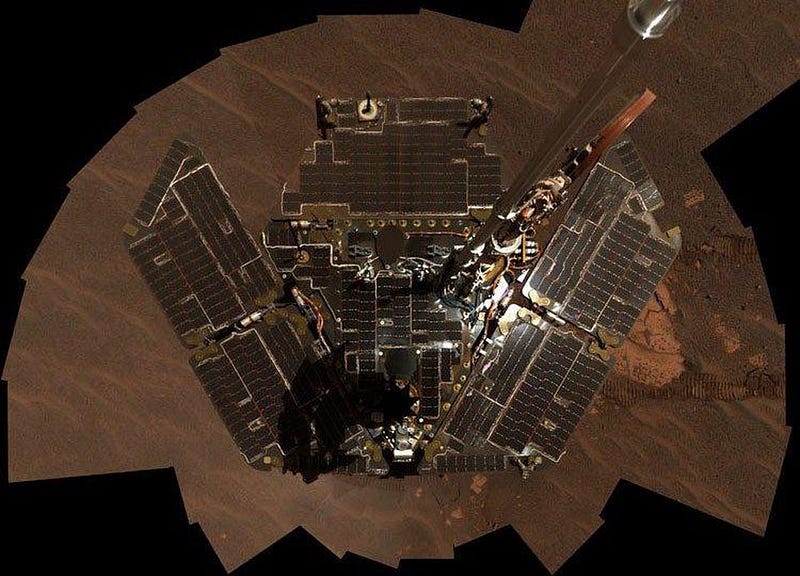
Finally, the last consideration would have been to outfit these rovers with a compressed air cylinder (or a Martian air compressor) and a blower arm. Just like you might take a can of compressed air to blow the dust off of a computer, the same physical mechanism would work just fine on Mars. You’d only have a finite amount of compressed air, but you’d only need to use it extremely sparingly: when natural cleaning events (which we didn’t know existed) don’t occur to help rejuvenate your rover. If we were to design these rovers from scratch again, knowing what we know now, adding this could have literally extended their lifetimes indefinitely.

Instead, we chose the most cost-effective (i.e., cheapest) solution: simply build bigger solar panels. If, over a 90 day mission, we expected up to 23% dimming, then by building solar panels with at least 23% more surface area, we’d ensure we had all the power we need. According to Mark Adler, the Program Architect for Mars Exploration when Spirit and Opportunity were designed:
So when faced with the cost and complexity of the ways to clean the panels, it turned out that both the cheapest approach and the lowest mass approach was to make the panels larger. Engineering problem solved. Move on to the next problem.
In the highly constrained budget, we could not and would not spend any money on going beyond the mission requirements. Every dime we had went into meeting the requirements with sufficient reliability.
And now, as a result, after over 45 kilometers (the most, ever) and 5,000 days on Mars, a single dust storm could signal the end of Opportunity for good.
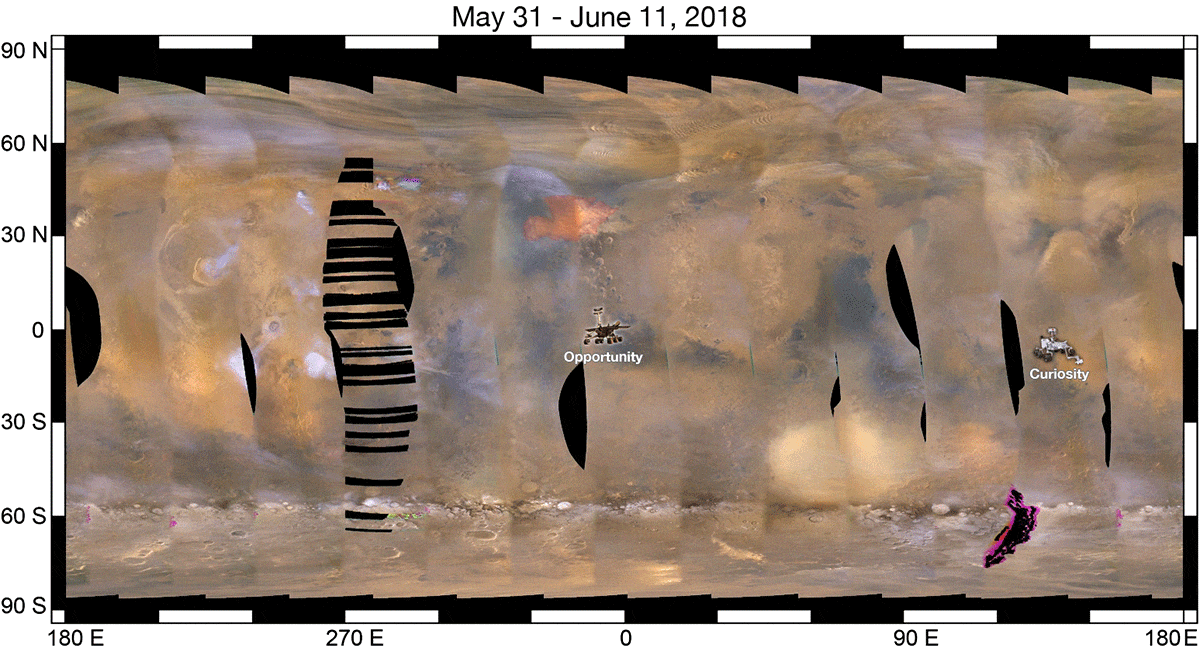
If one extra piece of equipment, such as a compressed air blower aboard a robotic arm, were installed, dusty solar panels could be cleaned at will. Hunkering down to survive a dust storm, even one that blocked 100% of the light, wouldn’t be catastrophic so long as the rovers had enough power stored in their batteries to control and operate the blower mechanism. Had that been in place, Spirit could have saved itself from its 2010 fate, and Opportunity wouldn’t be in the danger it’s in now, in the midst of the enormous dust storm it’s experiencing. Still, even though hindsight is 20/20, it’s pretty hard to be sad about two missions that overachieved beyond anyone’s expectations. But for next time, it’s an invaluable lesson: if you can protect yourself from Martian dust accumulation, you could potentially live forever. At least, if you’re a rover on Mars.
Ethan Siegel is the author of Beyond the Galaxy and Treknology. You can pre-order his third book, currently in development: the Encyclopaedia Cosmologica.




